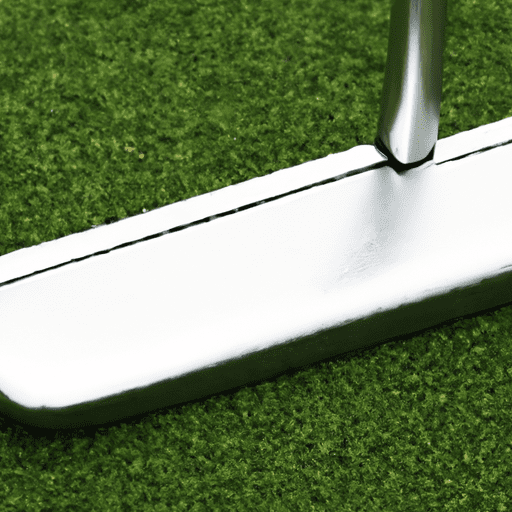In the exciting world of golf, mastering short putts can make all the difference in your game. When it comes to golf putting techniques, the art of sinking those crucial short putts requires focus, precision, and a steady hand. Whether you're a seasoned golfer or just starting out, understanding the strategies and techniques behind short putts can help you improve your overall performance on the green. So, grab your putter, tighten your grip, and get ready to unlock the secrets to mastering short putts in no time!
Mastering Short Putts
Importance of Short Putts
Short putts are an essential part of a golfer's game. They are the putts that determine whether you make or break a hole, and they can have a significant impact on your overall score. Mastering short putts can make all the difference between a successful round and a frustrating one.
Readying Your Mind
Before you even step onto the green, it's crucial to prepare your mind for the challenges of short putts. Maintaining a positive attitude is key. Approach each short putt with confidence and believe that you can sink it. Visualize successful putts in your mind, imagining the ball rolling smoothly into the hole. Developing confidence in your abilities will help you stay calm under pressure.
Developing a Solid Grip
A solid grip is the foundation for a successful putt. Understanding the importance of grip is essential. The grip connects your hands to the putter and allows you to have control over the stroke. Using the proper grip technique is crucial for accuracy and consistency. Avoid common grip mistakes, such as gripping the club too tight or too loose, which can hinder your ability to execute a smooth stroke.
Perfecting Your Stance
Finding a comfortable and balanced stance is crucial when it comes to short putts. Your stance should provide stability and allow for a fluid putting stroke. Proper alignment with the target is also essential. Aligning your body parallel to the target line helps ensure that your putter is on the correct path. Pay attention to your body posture, keeping your back straight and your weight evenly distributed for optimal balance.
Sharpening Your Alignment
Alignment is one of the key factors in sinking short putts. Aiming at the target is essential, but it's equally important to read the green breaks correctly. Analyze the slope and contours of the green to determine how the ball will roll. Look for visual alignment aids, such as a spot on the green or a blade of grass, to help you line up your putt accurately. Taking the time to sharpen your alignment will greatly increase your chances of making those short putts.
Finding the Sweet Spot
Understanding the concept of the sweet spot is crucial for consistent putting. The sweet spot refers to the center of the putter face, where maximum energy transfer occurs. It's the area that produces the best results in terms of accuracy and distance control. Take the time to identify the sweet spot on your putter and ensure that you consistently make contact with it. Consistent impact on the sweet spot will help you achieve more predictable and reliable results.
Controlling Your Tempo
Tempo plays a significant role in putting. It refers to the rhythm and pace of your stroke. Understanding your ideal putting tempo is key to gaining control over your short putts. Experiment with different tempos to find the one that feels most comfortable and allows for a smooth, pendulum-like stroke. Practice tempo control to develop consistency in your putting. By having a consistent tempo, you can improve your distance control and increase your chances of sinking those crucial short putts.
Improving Your Eye Focus
To successfully sink short putts, you must train your eyes to focus on the target line. Visualizing the line and target before each putt helps you align your stroke properly. Practice training your eyes to see the intended path of the ball and eliminate distractions from your surroundings. By improving your eye focus, you can develop a heightened sense of precision and accuracy.
Executing a Smooth Stroke
Executing a smooth stroke is the key to achieving success with short putts. A smooth stroke involves using your shoulders and arms to create a pendulum-like motion. Avoid any jerky or abrupt movements that can throw off your accuracy. Practice your stroke to ensure a consistent and fluid motion. By mastering a smooth stroke, you can optimize your chances of sinking those important short putts.
Managing Pressure Situations
Managing pressure situations is a skill that all golfers must develop to conquer short putts. Nerves and pressure can often play a significant role in affecting your putting performance. Learning how to handle nerves and pressure will allow you to perform at your best when faced with a crucial short putt. Develop a pre-putt routine that helps you calm your mind and focus on the task at hand. Practice putting under pressure to simulate real-life situations and build the confidence needed to succeed.
In conclusion, mastering short putts is essential for any golfer looking to improve their game. By understanding the importance of short putts, readying your mind, developing a solid grip, perfecting your stance, sharpening your alignment, finding the sweet spot, controlling your tempo, improving your eye focus, executing a smooth stroke, and managing pressure situations, you can significantly enhance your putting skills and increase your chances of sinking those crucial short putts. So, get out there, practice diligently, and soon you'll be confidently sinking short putts like a pro!






